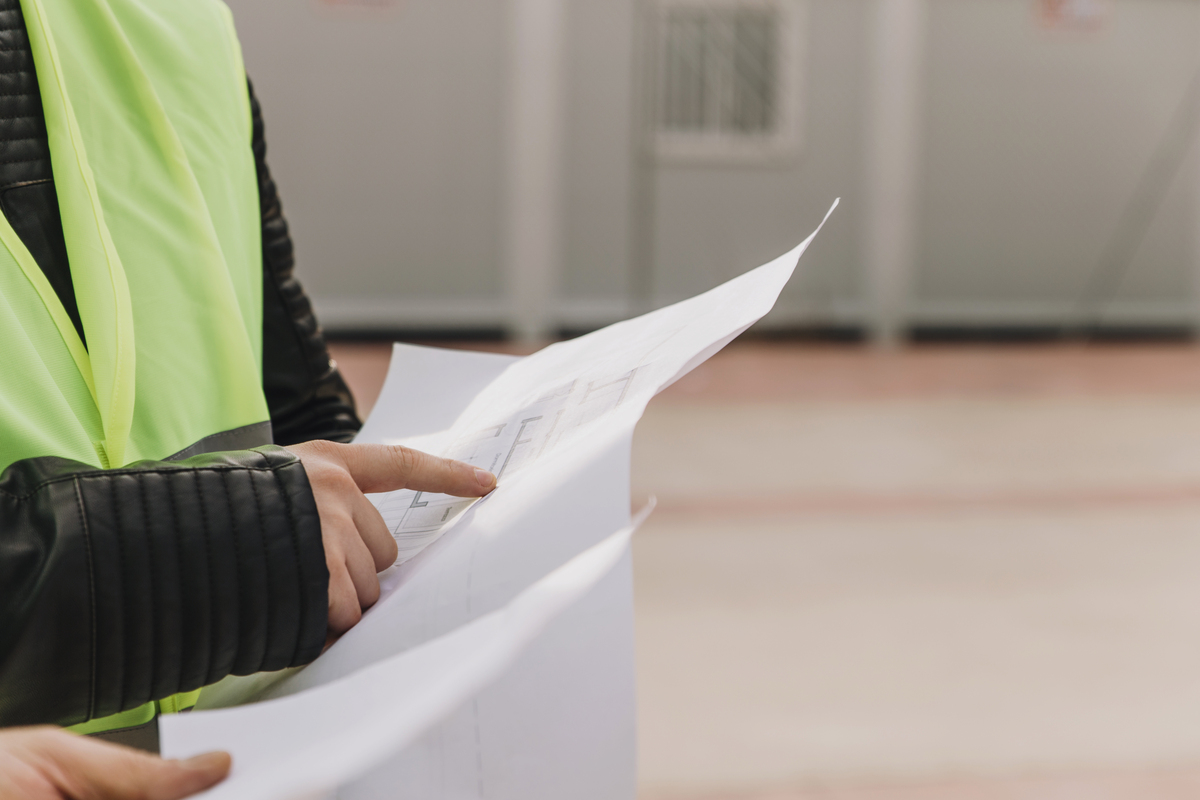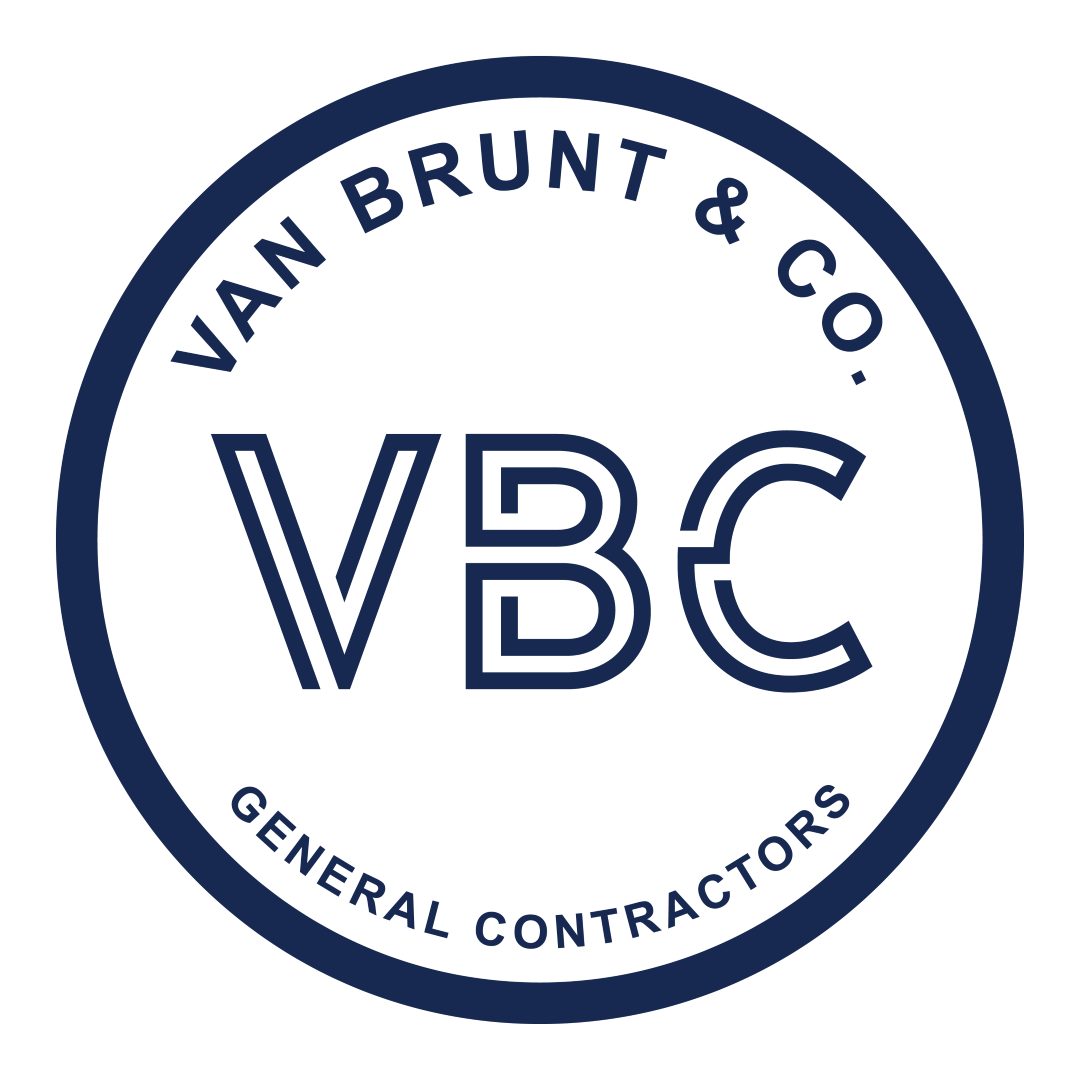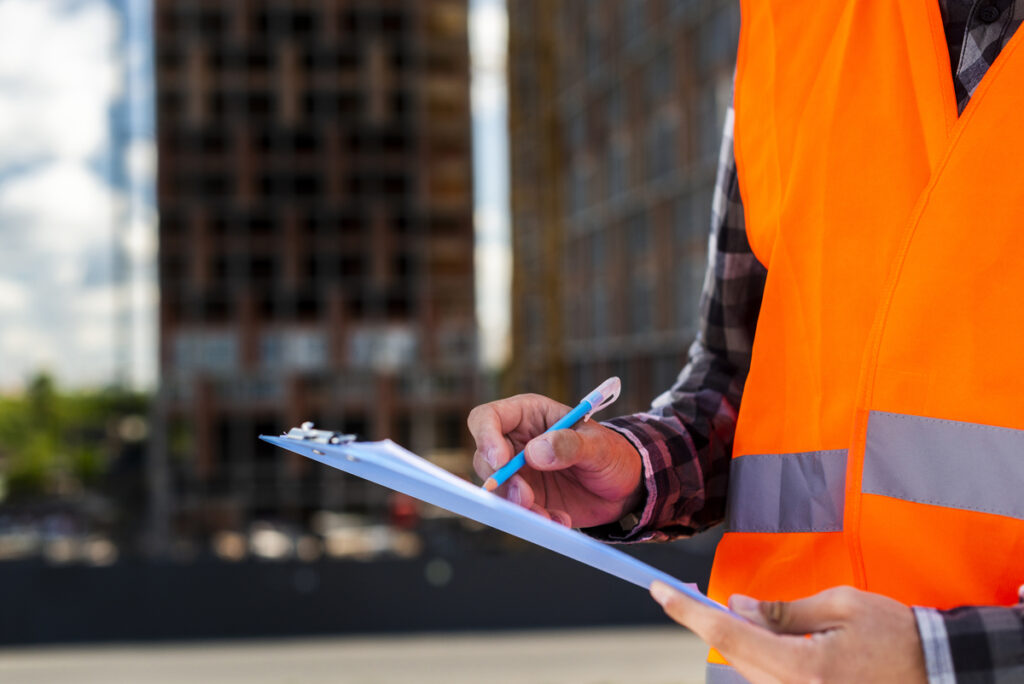Commercial construction projects are significant undertakings that require meticulous planning, compliance with regulations, and the coordination of various stakeholders. Before breaking ground, it’s essential to ensure that every aspect of the project is accounted for, from selecting the ideal location to securing the necessary permits. Failing to address these foundational requirements can lead to costly delays, legal issues, and budget overruns.
In this blog, we’ll walk you through the ten critical requirements you need to meet before starting your commercial construction project. By following this step-by-step guide, you’ll gain the insights and tools necessary to navigate complex regulations, create a realistic budget, and manage your project effectively from start to finish. Whether you’re planning a new build or remodeling an existing structure, this comprehensive overview will set you on the path to success.

A Step-by-Step Guide to Successful Commercial Construction Projects
Step 1: Choosing the Ideal Location for Your Commercial Build
The foundation of any successful commercial construction project starts with finding the perfect property. Before committing to a land purchase, confirm that its zoning laws align with your intended use. Collaborate with a trusted property agent to refine your options and clarify your vision for the build. Partnering with an architect early on helps transform your ideas into a comprehensive plan, setting the stage for a streamlined construction process.
Step 2: Verify Zoning Regulations for Your Commercial Build
After selecting a promising property, it’s crucial to review the zoning regulations that apply to it. Zoning laws determine the types of activities allowed on a piece of land and the kinds of structures that can be developed. Reach out to your local zoning office or planning authority to confirm that the property is approved for commercial use. If the current zoning designation doesn’t align with your project’s purpose, you may need to request a zoning modification or variance.
Step 3: Navigating the Zoning Permit Process-
If your project requires a zoning adjustment, securing a zoning permit is a crucial step. This process typically entails completing a comprehensive application form at your local city or town hall. You’ll need to detail your property’s intended use, provide the property owner’s information, and supply accurate contact details. Additionally, you must describe your project thoroughly. Remember, zoning regulations differ widely from one location to another, so take the time to familiarize yourself with the rules and guidelines specific to your area to ensure a smooth approval process.
Step 4: Navigating Local Ordinances and Covenants
Beyond zoning laws, it’s essential to address local ordinances and covenants that might affect your project. These rules often dictate key factors like building height, setback distances, and how much of the lot can be developed. To stay on track, connect with your local planning commission to secure written approval and verify that your plans align with all applicable regulations. Taking this proactive step can help you sidestep legal complications and prevent unnecessary delays in your project timeline.
Step 5: Securing a Building Permit for Commercial Construction
After gaining approval for zoning and local ordinances, the next crucial step in your commercial construction journey is obtaining a building permit. This permit ensures your project adheres to safety standards and building codes. To get started, submit your site plans for a thorough review by your city or town officials. They’ll evaluate the design and safety features to confirm compliance with regulations. Partnering with an experienced property agent can streamline this process, as they bring valuable expertise in navigating permits and local requirements.
Step 6: Choosing the Right General Contractor
Selecting a trusted general contractor with proven expertise in commercial construction is crucial for your project’s success. The right contractor will streamline the building process, ensuring all necessary permits and licenses are secured while adhering to local building regulations. Moreover, an experienced contractor can help you save both time and money by offering cost-efficient solutions and enhancing overall project efficiency. Their in-depth knowledge of construction site safety ensures a secure and compliant work environment, safeguarding everyone involved and maintaining the integrity of your project.
Step 7: Getting Ready to Break Ground
Before diving into construction, it’s essential to have everything meticulously organized. Finalize your building plans, confirm financing, and establish a practical timeline for the project. A clear grasp of the project’s scope and budget is key to steering clear of unexpected setbacks. Maintain open communication with your contractor and project team to ensure everyone is aligned, and tackle any challenges head-on to keep progress on track.
Step 8: Site Services and Equipment Rentals
Efficient site preparation is a cornerstone of any successful commercial construction project. By ensuring access to essential site services and equipment rentals, you can create a safe, organized, and productive work environment.
Step 9: Prioritize OSHA Compliance for a Safer Construction Site
Adhering to OSHA (Occupational Safety and Health Administration) standards is essential for ensuring both safety and regulatory compliance on any construction site. Begin by understanding OSHA guidelines thoroughly and implementing all required safety measures before breaking ground. Equip your team with appropriate personal protective equipment (PPE), deliver comprehensive safety training, and conduct routine site inspections to proactively address and reduce risks. These practices not only protect workers but also support a smooth and lawful project execution.
Step 10: Complete Your Final Checks and Inspections
Before starting your project, it’s essential to perform a thorough review of all your plans and ensure that all required inspections are in place. This could involve conducting environmental assessments, soil tests, and verifying utility connections. Resolve any remaining issues and secure final approvals from the appropriate authorities to guarantee a smooth and timely project launch.

Understanding Commercial Construction Regulations
Overview of Federal, State, and Local Regulations
Commercial construction projects are subject to a complex web of federal, state, and local regulations, each designed to ensure safety, environmental compliance, and fair labor practices. At the federal level, agencies such as the Occupational Safety and Health Administration (OSHA) and the Environmental Protection Agency (EPA) enforce critical standards. OSHA focuses on workplace safety, requiring contractors to implement measures that protect workers from hazards such as falls, electrical dangers, and toxic substances. Meanwhile, the EPA regulates construction practices that may impact air quality, water resources, and waste management.
State and local regulations add another layer of complexity. These rules often address zoning laws, building codes, and permits specific to the project’s location. Zoning laws dictate where commercial structures can be built and often define the types of businesses that can operate in specific areas. Building codes, on the other hand, outline the standards for structural integrity, fire safety, and accessibility. Navigating these varied regulations requires meticulous planning and collaboration with local government agencies to ensure compliance from project inception to completion.
Common Challenges in Navigating Legal Requirements
One of the most significant challenges in commercial construction is staying up-to-date with the ever-evolving legal landscape. Changes in environmental policies, labor laws, and safety regulations can disrupt project timelines if not anticipated and addressed early. For instance, stricter energy efficiency standards may require contractors to source new materials or adopt innovative construction techniques, potentially increasing costs and delays.
Another challenge lies in coordinating with multiple regulatory bodies. A single project might involve approvals from federal agencies, state boards, and local planning commissions. Miscommunication or delays in obtaining necessary permits can lead to significant financial penalties and project setbacks. Additionally, interpreting and applying regulations correctly is often a source of confusion, especially when there are discrepancies between federal and state requirements.
To overcome these hurdles, many construction firms invest in legal counsel and compliance specialists who focus exclusively on regulatory adherence. Leveraging technology, such as project management software and compliance tracking tools, can also streamline the process and reduce the risk of errors. Ultimately, understanding and addressing these challenges early in the planning phase can save time, money, and resources, ensuring that projects are completed successfully and within the bounds of the law.

Budgeting and Financial Planning for Commercial Construction
Effective budgeting and financial planning are critical to the success of any commercial construction project. Whether you’re constructing a new facility or remodeling an existing one, having a well-structured financial plan ensures that you can navigate unexpected costs and keep the project on track. Here’s a closer look at some key aspects of budgeting for commercial construction.
Estimating Costs for Materials and Labor
Accurate cost estimation for materials and labor is the foundation of a successful project budget. Begin by breaking down your project into individual components, such as site preparation, framing, electrical work, and finishes. Research current market rates for materials and compare quotes from multiple suppliers to get the best value. Similarly, gather bids from reputable contractors to understand labor costs, keeping in mind that factors such as project complexity, location, and timeline can significantly influence pricing.
Don’t forget to account for indirect costs like permits, inspections, and administrative expenses. Using cost estimation software or consulting with a professional estimator can help enhance accuracy and prevent costly miscalculations. Remember, underestimating expenses can lead to financial strain, while overestimating may result in wasted resources.
Securing Financing or Loans for Your Project
Securing the necessary funding is often one of the biggest challenges in commercial construction. Start by determining the total budget for your project, including both direct and indirect costs. Once you have a clear financial roadmap, explore your options for financing. These may include traditional bank loans, lines of credit, or private investors.
Prepare a comprehensive business plan or project proposal to present to potential lenders. This should include detailed cost breakdowns, expected timelines, and projected returns on investment if applicable. Building strong relationships with financial institutions and maintaining a solid credit history can increase your chances of securing favorable loan terms. Additionally, consider alternative funding options such as grants or government programs designed to support commercial development.
Managing Contingency Budgets
Unexpected challenges are almost inevitable in construction, making contingency budgets a vital part of financial planning. A contingency fund acts as a financial safety net, allowing you to address unforeseen expenses without derailing the project. Industry experts typically recommend setting aside 5-15% of the total project budget for contingencies, depending on the scope and complexity of the work.
Regularly review your project’s financial health and adjust the contingency fund as needed. For example, if certain stages of the project are completed under budget, you may choose to reallocate those savings to other areas. Transparent communication with your team and stakeholders about the use of contingency funds fosters trust and ensures everyone is aligned in managing unexpected costs.
By carefully planning for materials, securing appropriate financing, and maintaining a well-monitored contingency budget, you can significantly reduce the financial risks associated with commercial construction. Thoughtful financial preparation paves the way for a smoother process and a successful outcome.
Conclusion
Embarking on a commercial construction project is a complex yet rewarding endeavor that demands thorough preparation and attention to detail. By following the ten essential requirements outlined in this guide—ranging from choosing the ideal location to finalizing budgets—you can lay the foundation for a successful build or remodel. From navigating zoning laws to ensuring OSHA compliance, each step plays a critical role in safeguarding the project’s timeline, budget, and overall quality.
At Van & Brunt Company, we specialize in delivering expert commercial construction and remodeling services tailored to your needs. With years of experience, our team is dedicated to guiding you through every stage of the process, ensuring compliance, efficiency, and excellence. Let us help bring your vision to life—contact us today to learn how we can support your next project.
FAQs
What permits are needed for a commercial construction project?
Permits such as zoning, building, and environmental compliance are commonly required. Check with local authorities to determine the exact permits for your project.
How do I verify zoning regulations for a commercial property?
Consult your local zoning office or planning authority to confirm the property’s zoning designation and ensure it aligns with your intended use.
What are the key financial considerations in commercial construction?
Budgeting for materials, labor, permits, and contingencies is critical. Secure financing through loans, lines of credit, or investors to cover all costs.
Why is OSHA compliance essential in commercial construction?
OSHA standards ensure a safe work environment, reducing risks and meeting legal requirements. Regular inspections and safety training are key components.
What is the role of a general contractor in commercial construction?
A general contractor oversees the construction process, secures permits, manages subcontractors, and ensures adherence to regulations and timelines.

